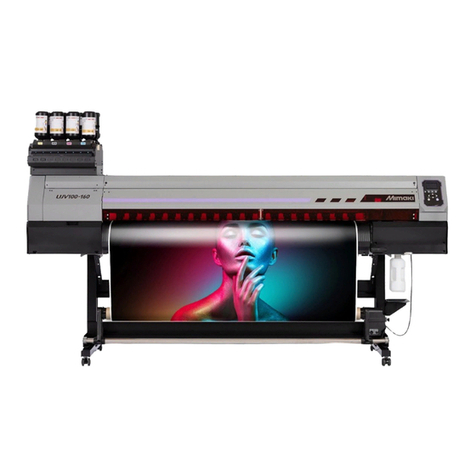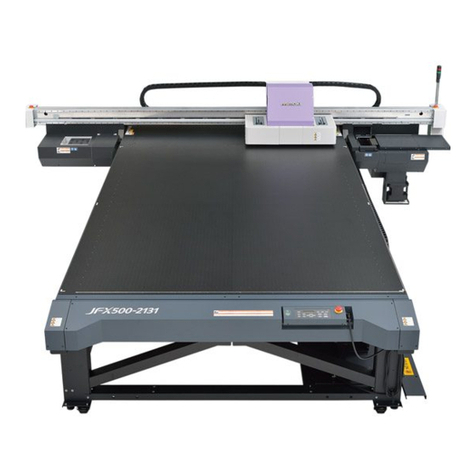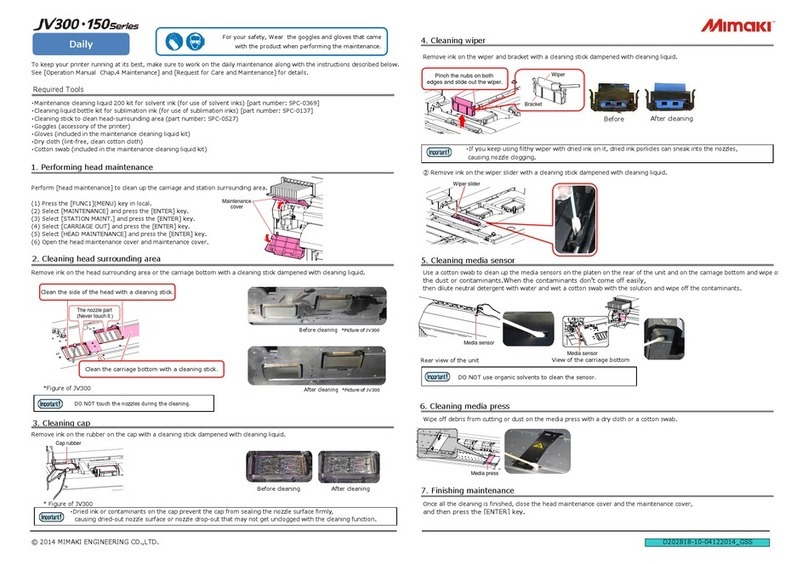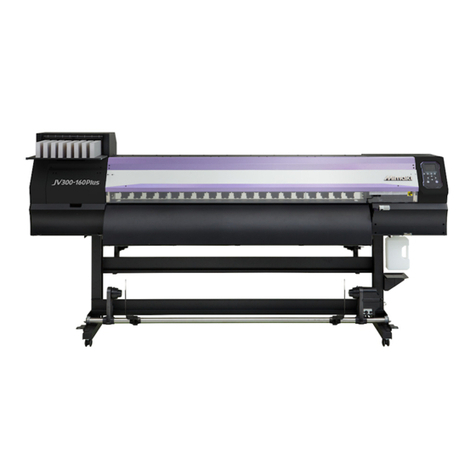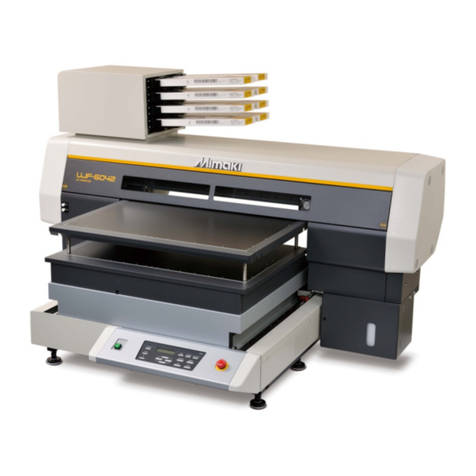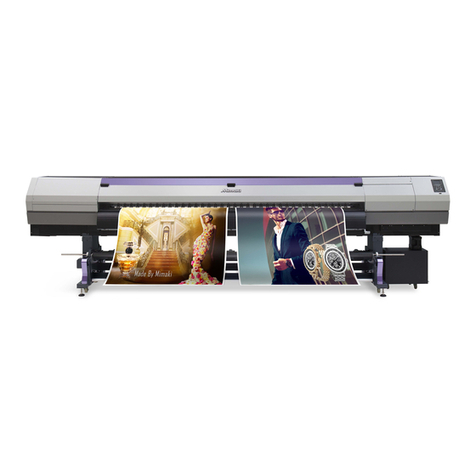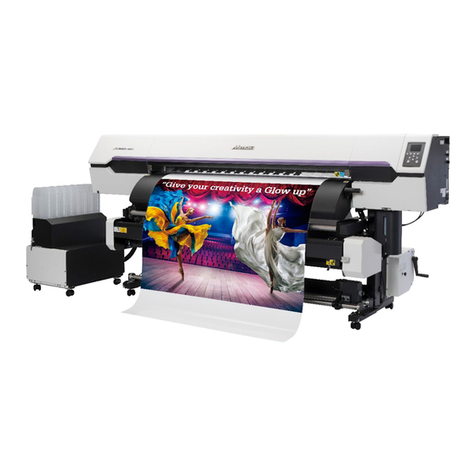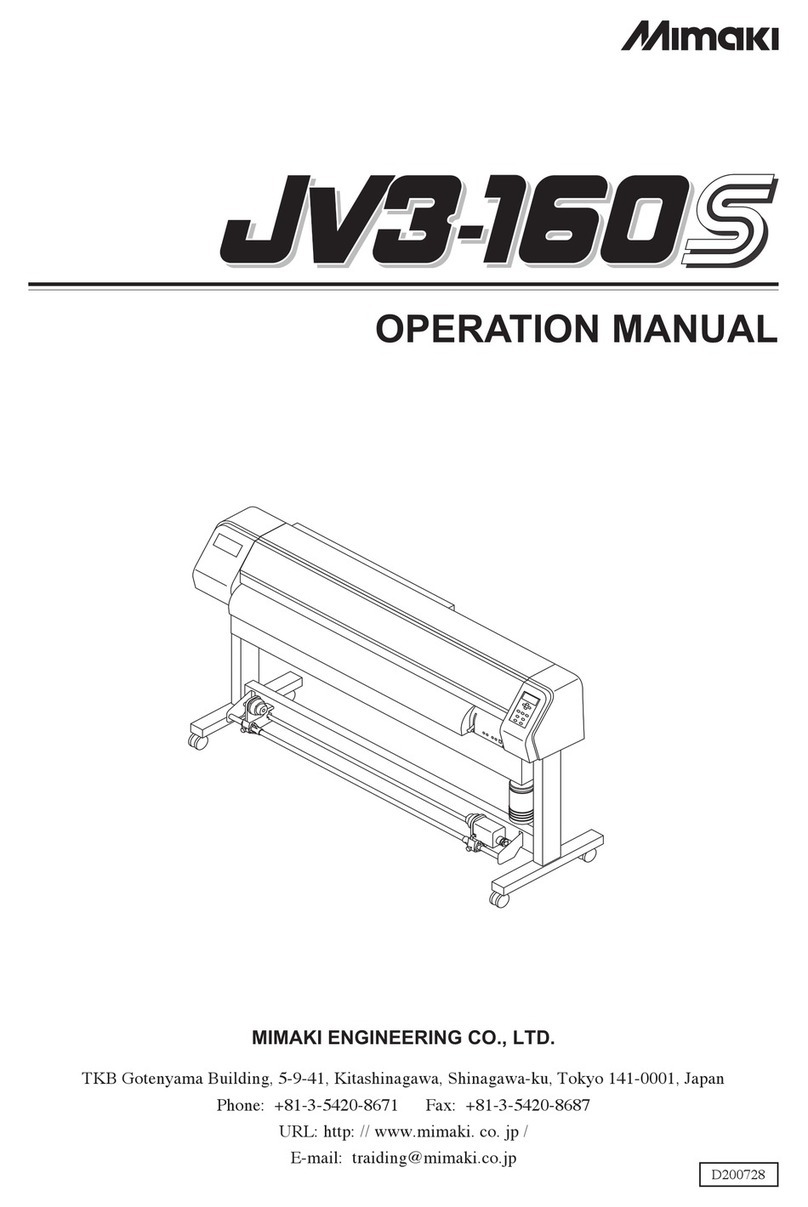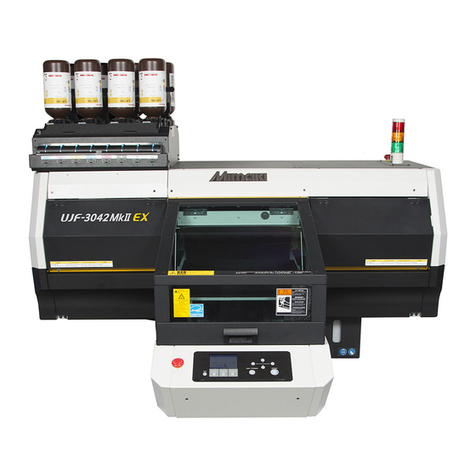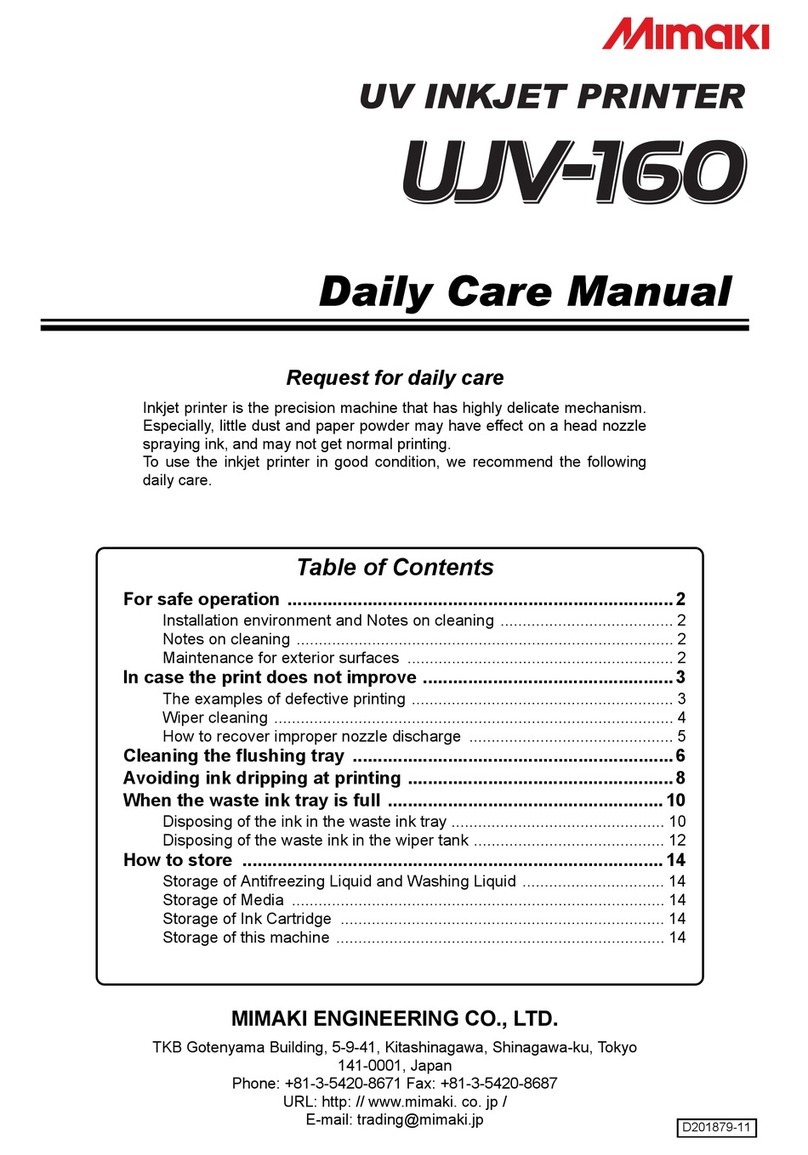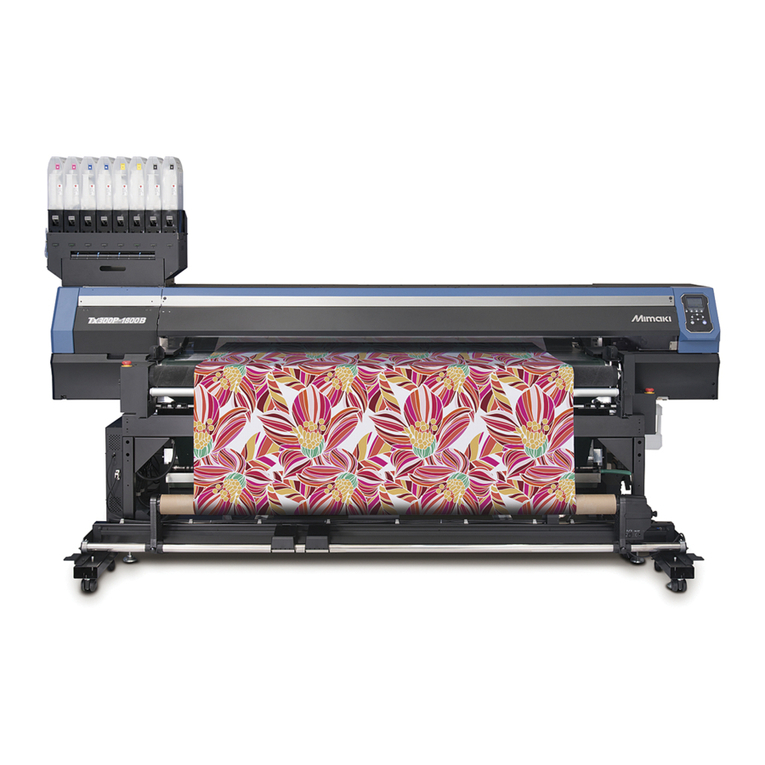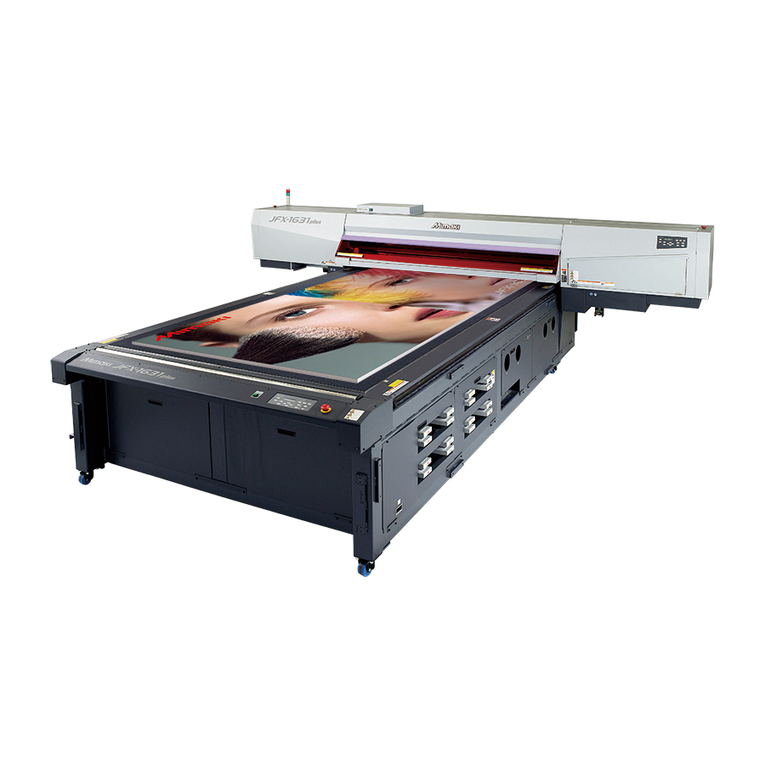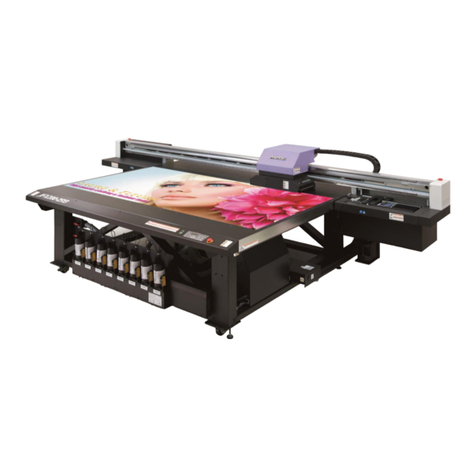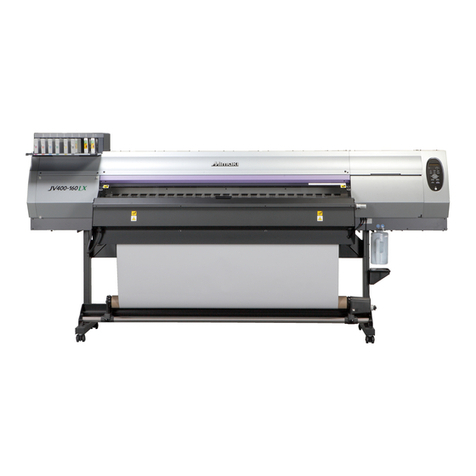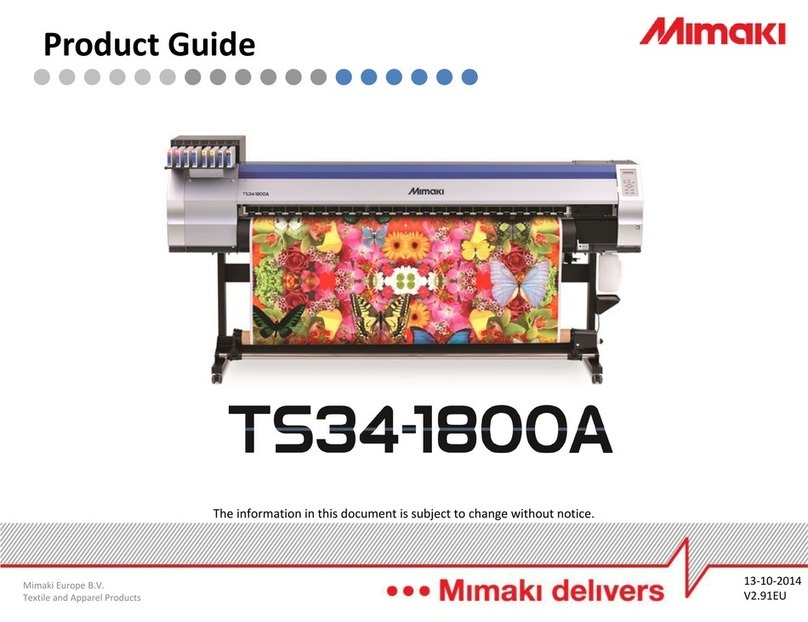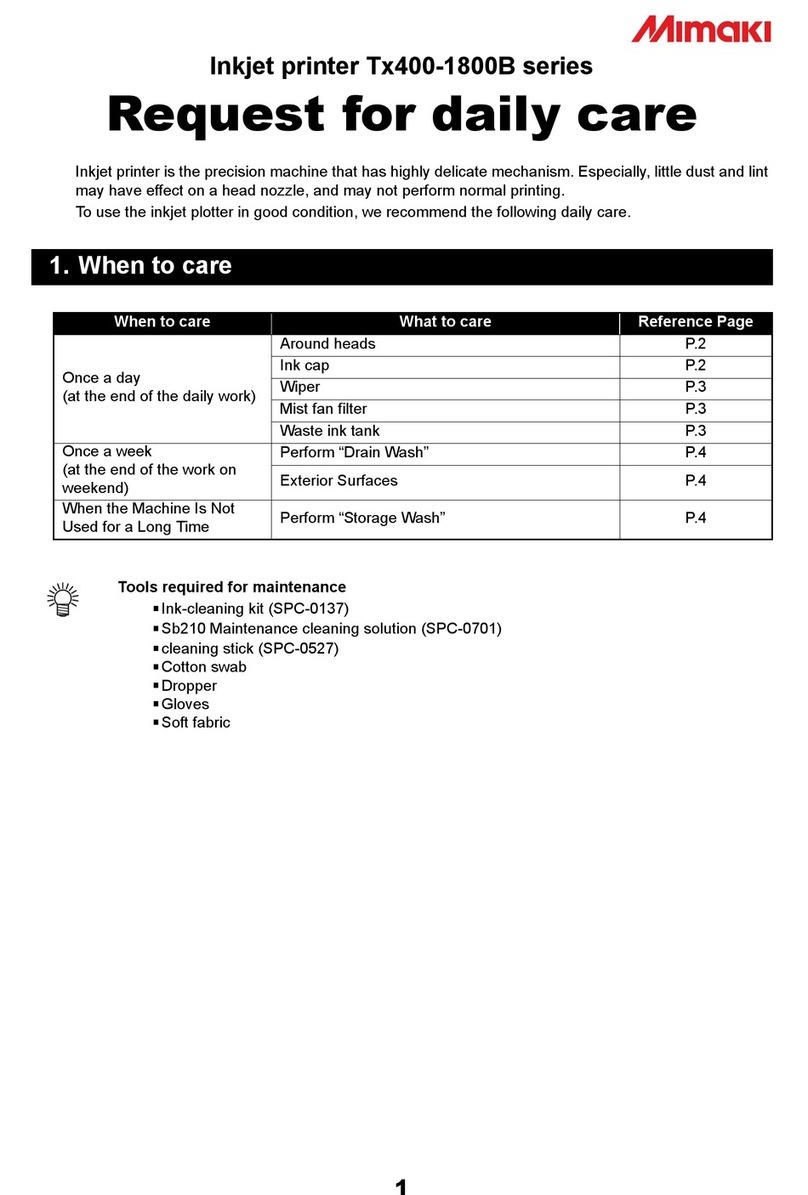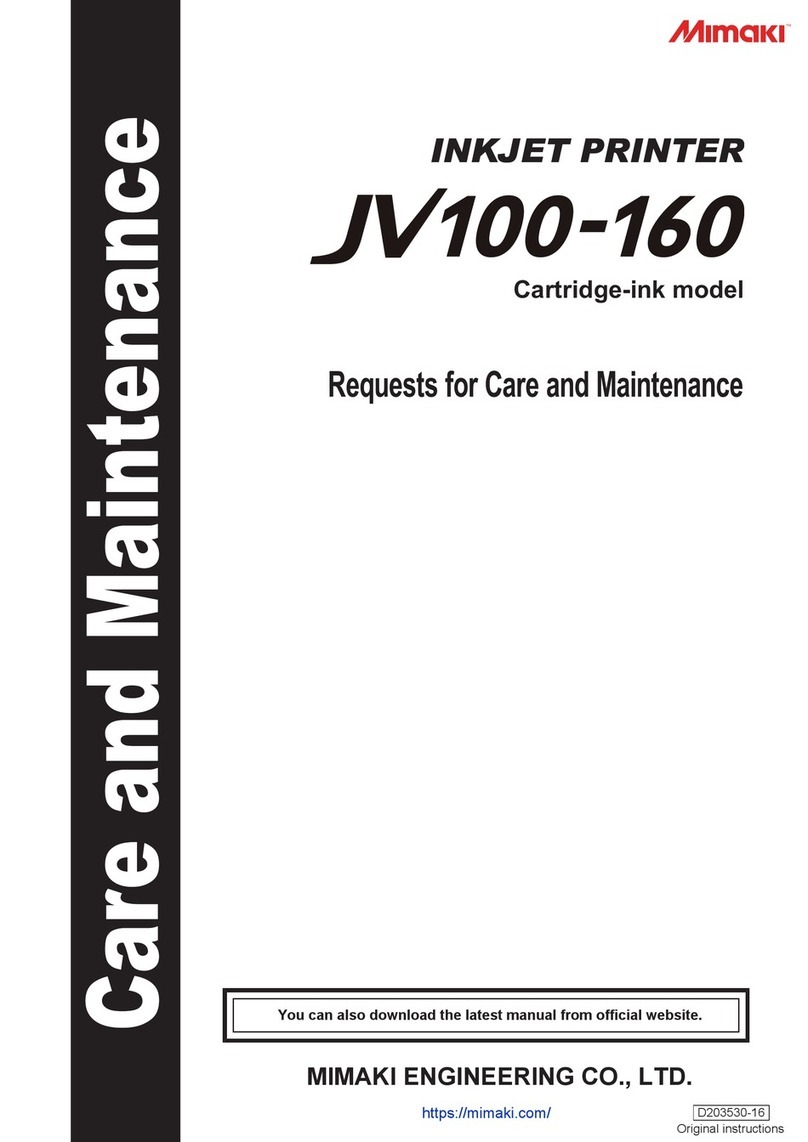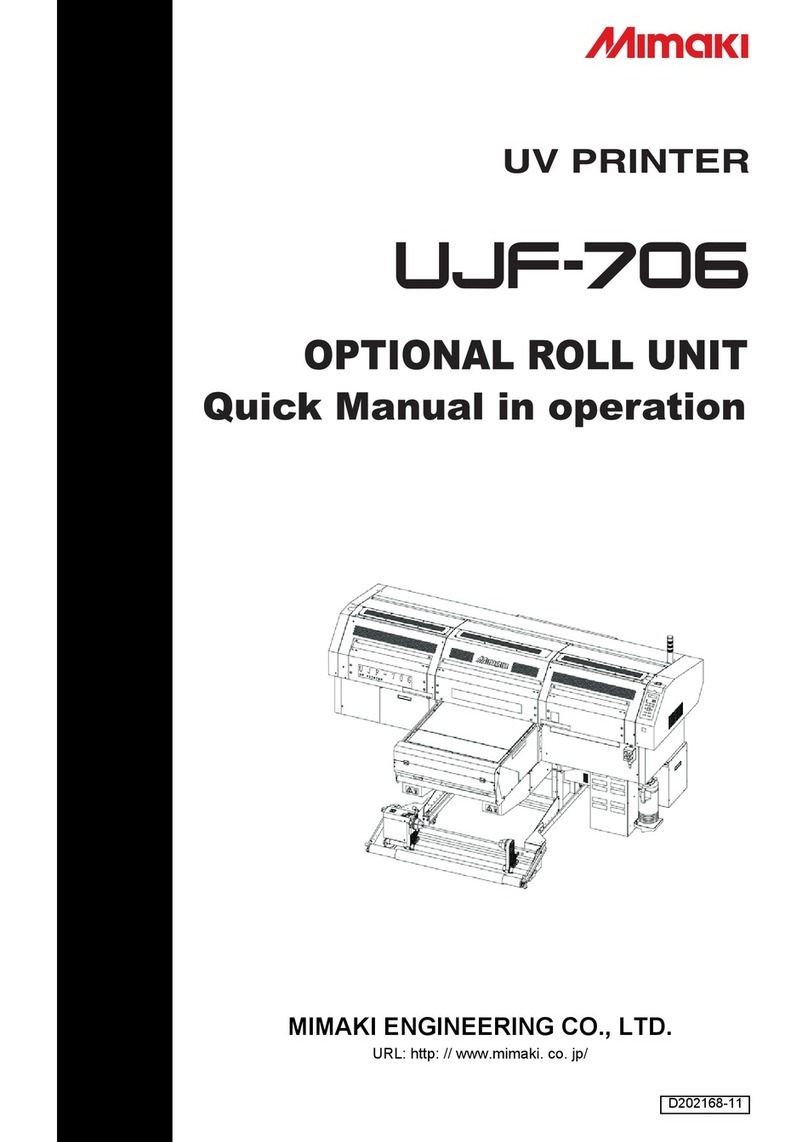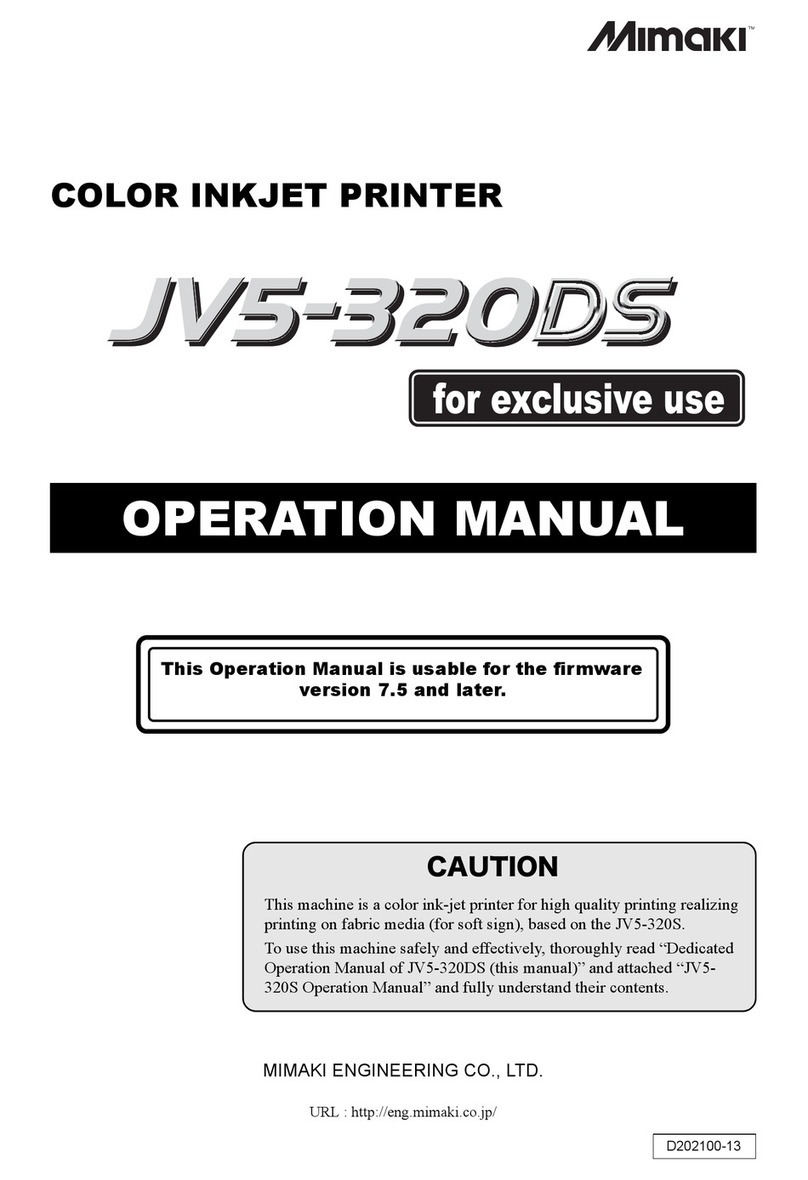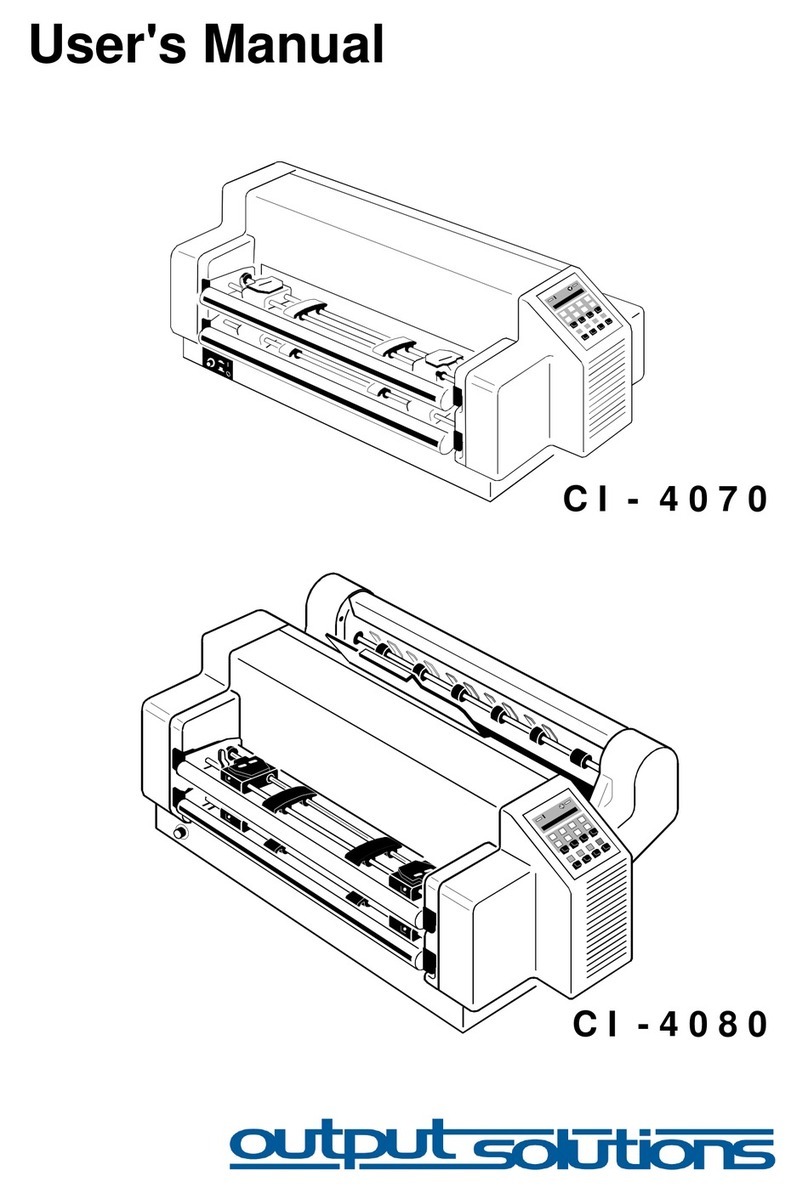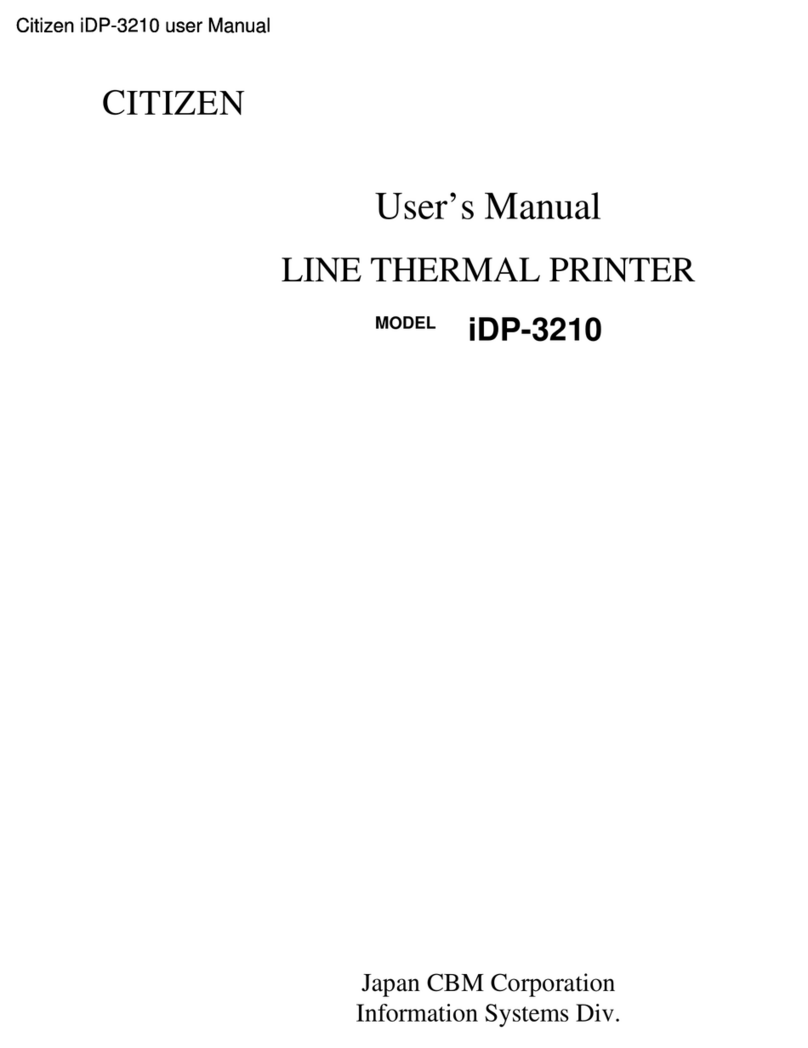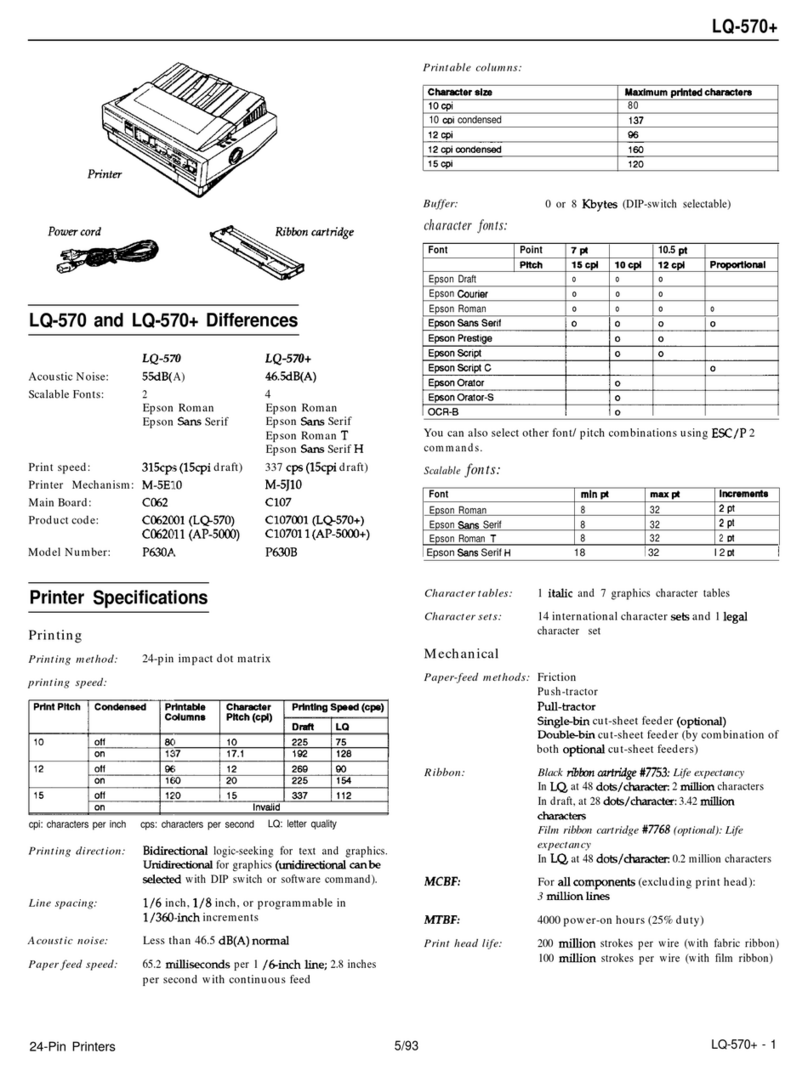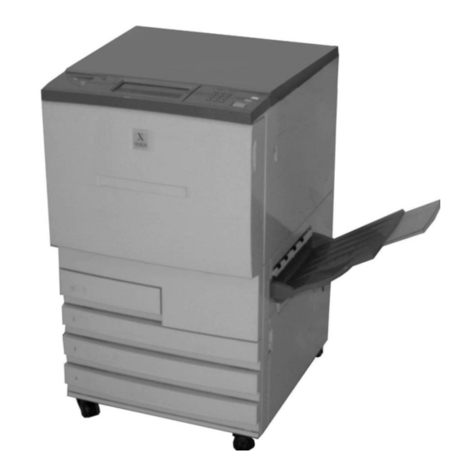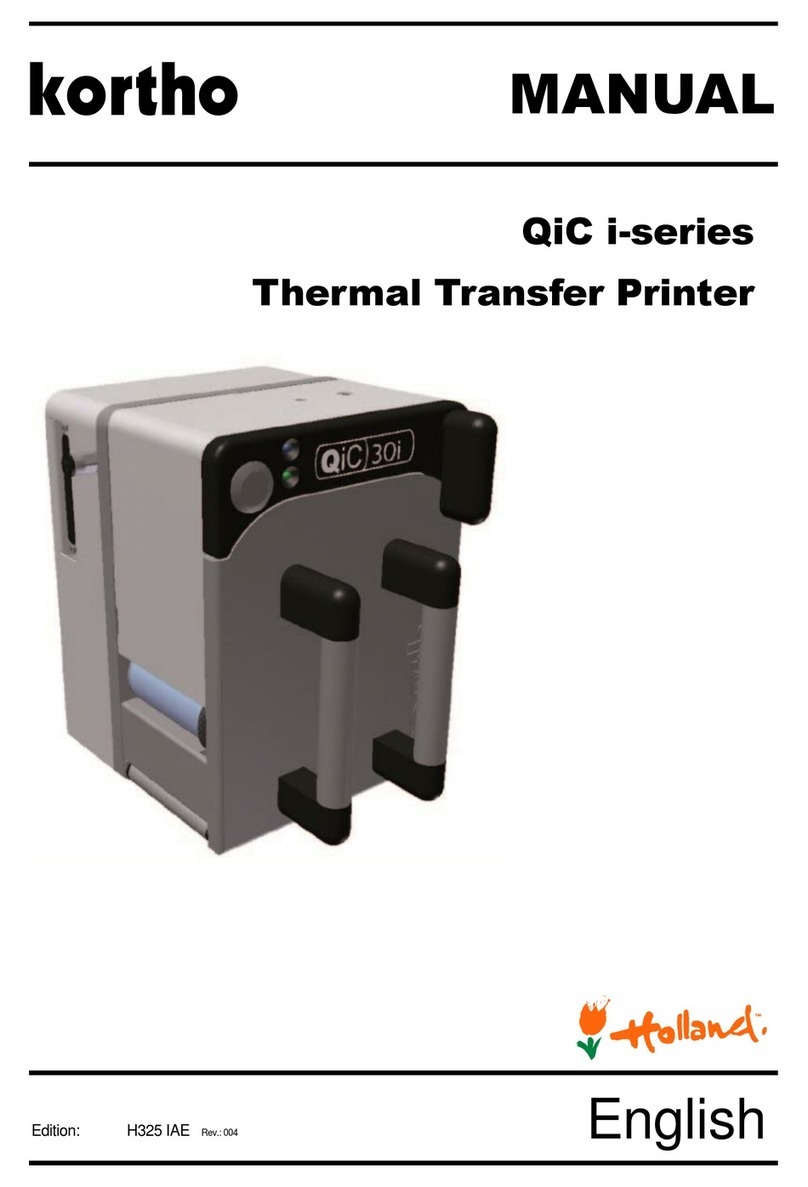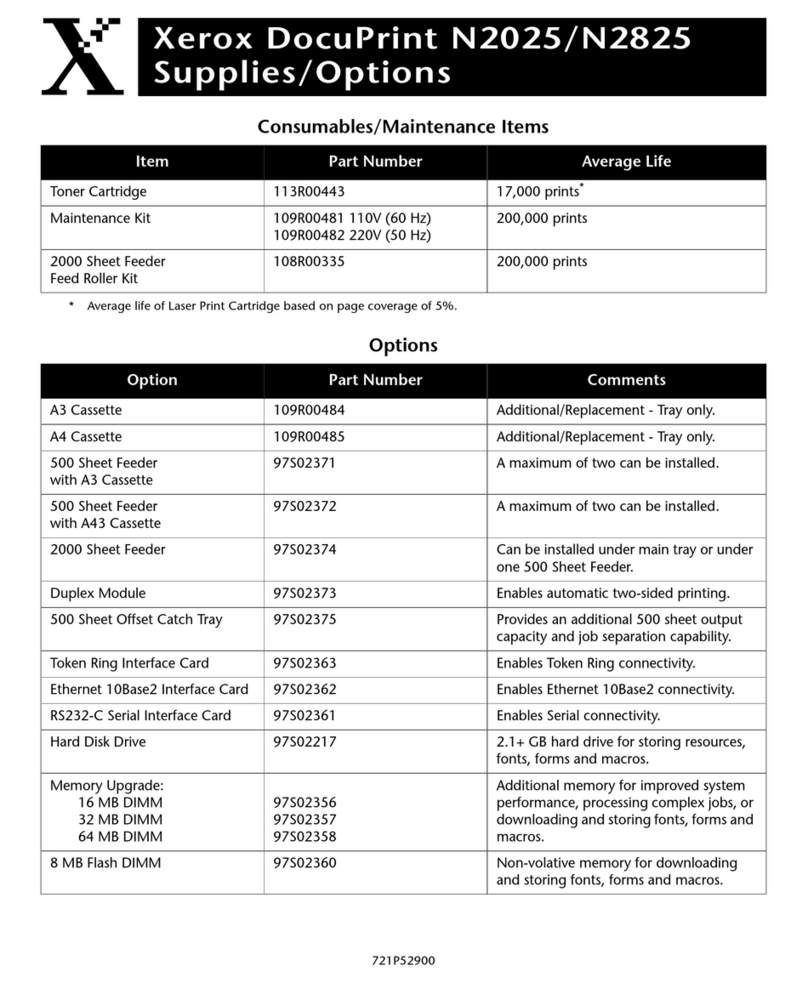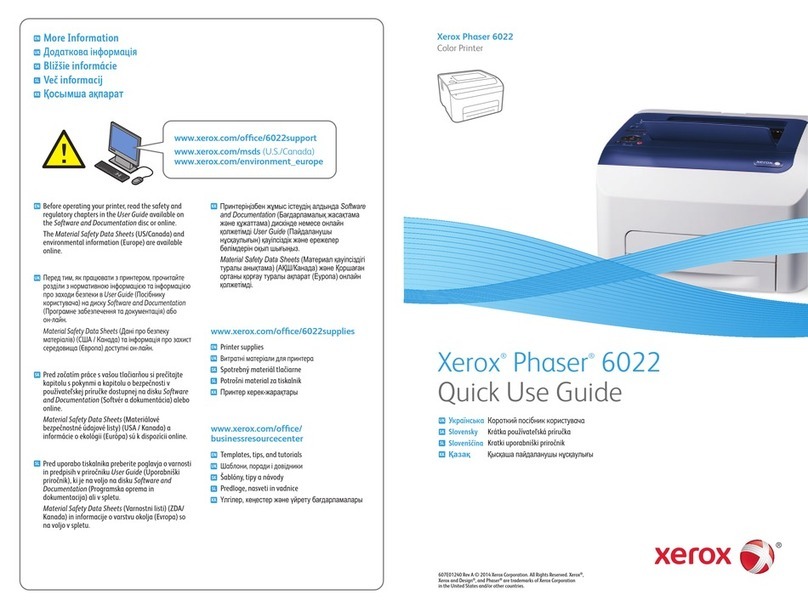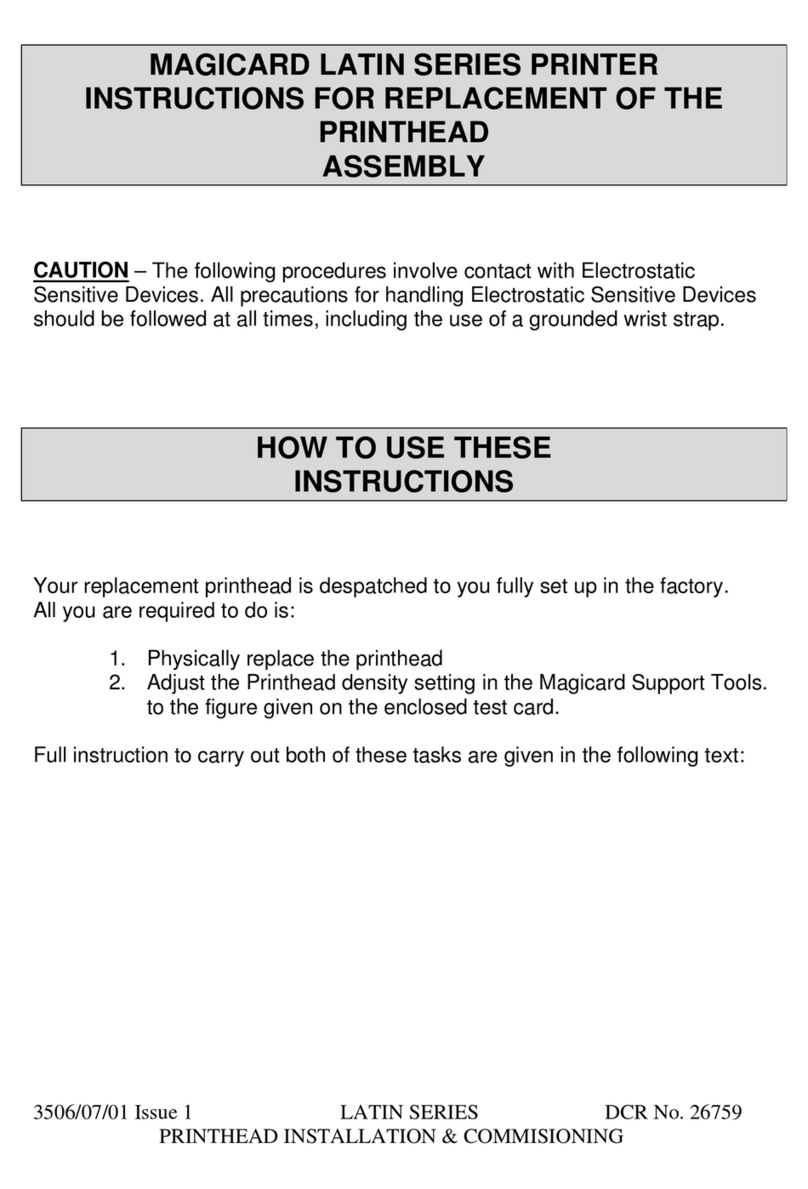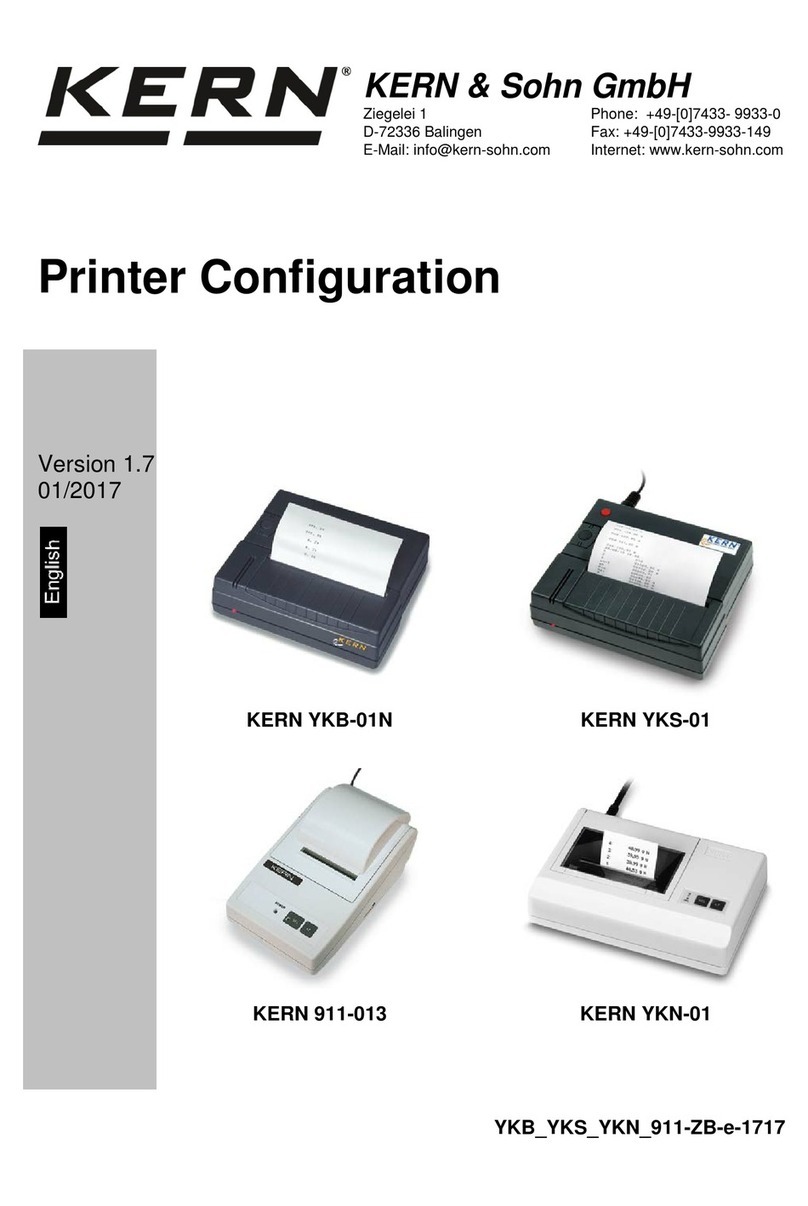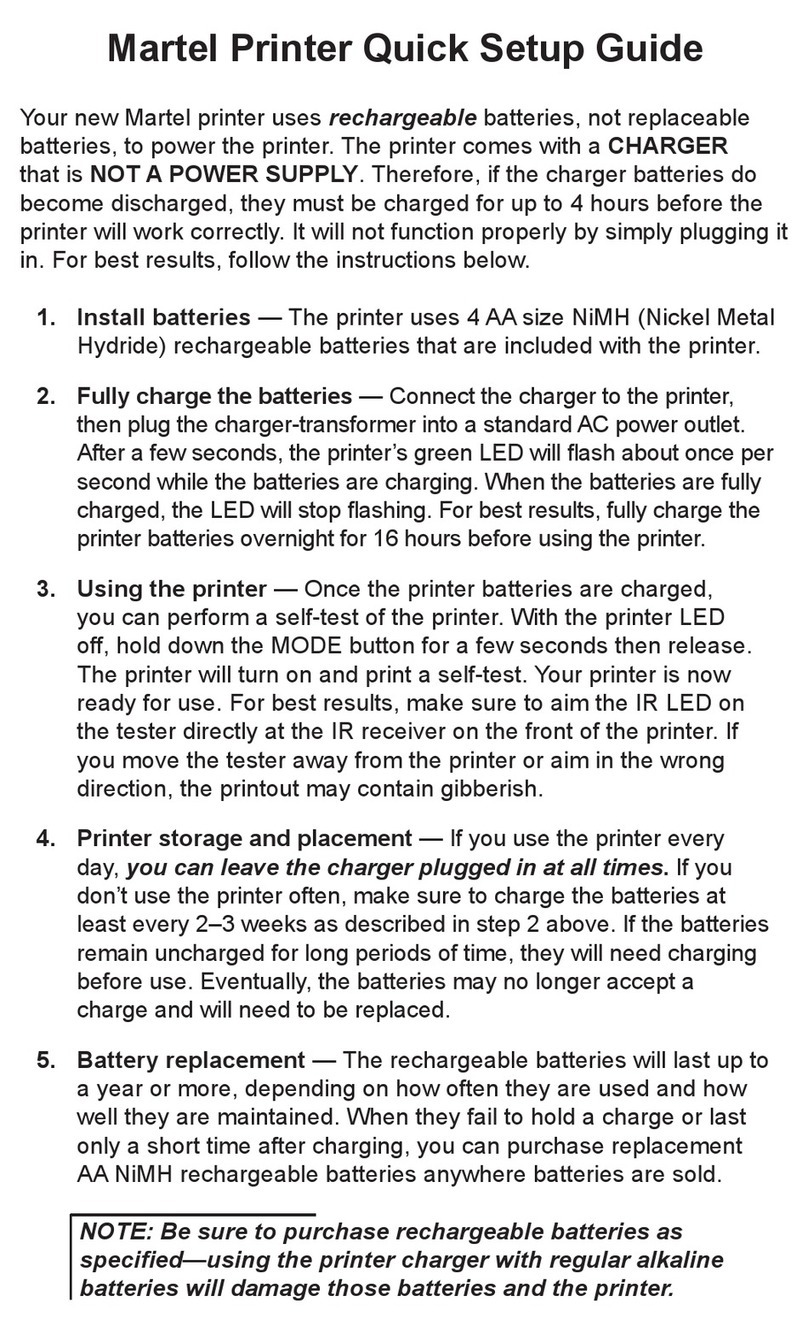
– 1.9 –
Handling Notes Effects and influences
Cloth setting 1
2
3
4
5
Winding 1
2
Plotting 1
2
1-6. Cloth Media Handling Notes
Pull out the cloth once to the front and then roll
by holding the roll holder or paper tube.
If the cloth is stretched on the right and left,
hardened by gumming, thick, or folded, release
the pinch roller at the faulty area.
Band stripe output in plotting differs when the
end of the cloth has exceeded the friction roller
and when it has reached the take-up device.
Start plotting after the end of the cloth reaches
the take-up device or is set on the take-up paper
tube.
Use the platen board if the ink does not pen
etrates through the cloth.
The head gap becomes relatively large where
the cloth plotting area is drooping, and produces
a black line where it is not.
A narrow rolled cloth had better be rolled
inward and outward repeatedly for straightening
before setting.
For winding, use the interval method and avoid
the continuous (tension) method.
Since the interval method does not apply
tension, a cloth cannot be wound tight. Conse-
quently, a 46-meter cloth may not be wound.
A very elastic cloth (ex. Lycra or Spandex)
cannot be used. This should be explained to the
user in advance.
Wetting shrinks a cloth and the right and left
edges are stepped.
This corrects the cloth not fed straight or equally
tense at the left and right centers.
This prevents wrinkling behind the pinch roller.
Tension at the cloth plotting area is determined
by the friction roller tension and the self weight
of the drooping cloth. This tension should be
made almost constant.
If you take the drooping cloth during plotting,
you can check its influence at the plotting line.
(A line appears.)
The platen board prevents the cloth from
drooping from the plotting area by the self
weight (+ ink weight).
If “Media correction” is adjusted to where the
cloth is not drooping:
1)A black line appears at a dropping place.
2)A white line appears at a non-drooping
place.
A narrow rolled cloth may become askew
greatly because the cloth is projecting outward.
In the continuous method, if the winding
diameter becomes large, the winding torque is
lost due to its own load and the tension on the
cloth decreases.If constant tension is lost, a
band stripe appears.
Loose winding causes the cloth to interfere
with the nearby shaft early.
An elastic cloth is stretched at the friction
roller and starts slipping when stretched to
certain extent. This makes the feed rate not
constant.
A plotted band shrinks and its end does not
match that of the next band.




















